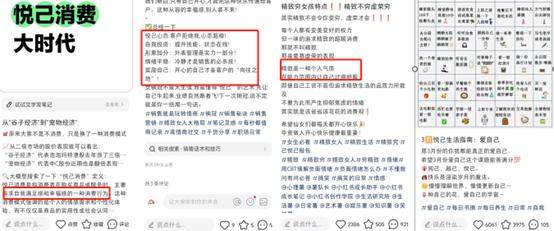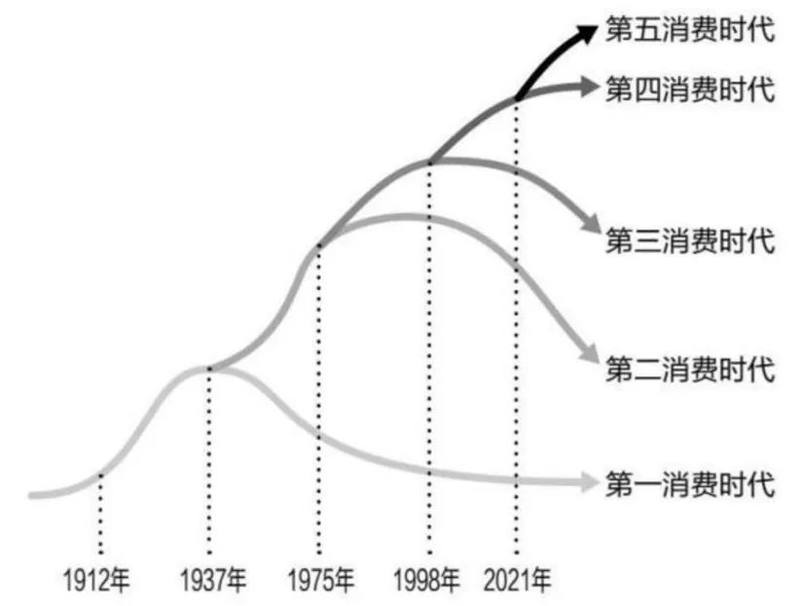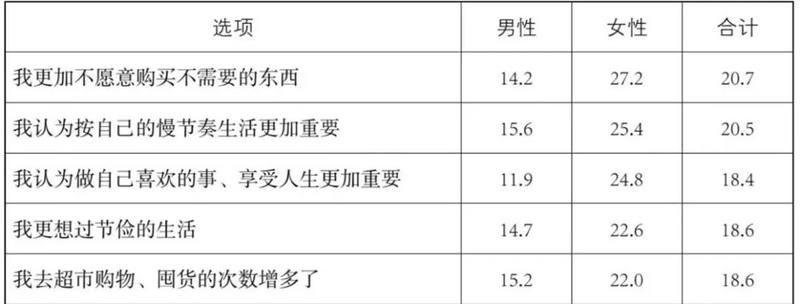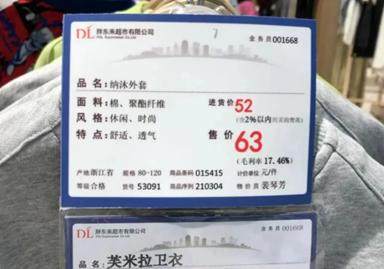Revelation of “happy consumption”.
The fifth consumption era: The successive rise of Pinduo, Xiaohongshu, Bubble Mart, and Fat Donglai all have a common bottom-level logic.
Wen| brocade
In the “Overture: The Fifth Consumption Era” report, we revealed for the first time the underlying logic and typical characteristics of the fifth consumption era.
After starting with the prelude, we will officially enter the in-depth theme research of the fifth consumption era this year. It is hoped that through this series of research, a unique and pragmatic cognitive framework on China’s consumption will be formed.
As the first important keyword, our research focuses on: Yueyi.
This is not a buzzword that comes out of thin air. In the Japanese consumer market over the past 30 years, it has become the China consumer market after 2020. The connotation and weight of the word “Yueyi” in the consumer field are becoming more and more profound, and is becoming a key word in the fifth consumer era.
In this context, it is particularly important to compare the internal causes and consumption characteristics of the Chinese and Japanese Yueji consumer markets and clarify what enlightenment Yueji consumption has for enterprises.
01 Two connotations of self-pleasing consumption
We also need to start with the definition of self-pleasing consumption.
According to the “Generation Z Consumption Trend Analysis Report”, on mainstream content platforms such as Weibo, Xiaohongshu and Douyin, tweets about self-interest increased by 74% year-on-year. ldquo; Self-satisfaction has become an important label affecting Generation Z consumption. Of course, for many pre-1985 people, there may be the same confusion: the topic of self-satisfaction seems a bit inexplicable.
In most past context descriptions, the context used by Yue oneself often has a clear opposite, that is, investing wealth and time into oneself rather than the outside world: for example, giving gifts to curry favor with leading customers may be thankless, so it is better to save them to improve your abilities.
But in recent years, affordable products can replace the word self-satisfied consumption to a certain extent: for example, purchasing traditional brand cars with stronger class identity is not as functional as affordable domestic new energy vehicles, and sacrificing the benefits for external face is not worth it.
From a certain perspective, the latter’s logic seems to stand up to scrutiny, because the relationship between pleasing others and pleasing oneself is always a bit ambiguous.
For luxury goods, in the eyes of some people, this is to show their status and identity to the outside world, and it is a pleasant expression. But if I just like the texture and design of this luxury item very much and feel satisfied after buying it, is this pleasing to me?
For another example, lipstick is usually regarded as a lower-priced alternative to cosmetics. I am happy to buy lipstick and apply it, but in fact, wearing lipstick to improve my appearance is something that outsiders see. Is this pleasing to others or to myself?
With this question in mind, I tried to seek answers from the expressions of two consumer masters, one is Miura Exhibition, and the other is Xiaohongshu, who is comparable to a consumer master but has more China characteristics.
From the perspective of the Miura Exhibition, Japanese society’s self-pleasing consumption is a reflection of regeneration and activation: Japanese society has never craved a sense of reality as it is today, rather than illusory magic expansion. Therefore, self-satisfaction has become the most direct and real consumer behavior.
From the perspective of Japanese society, the definition of self-pleasing consumption is authenticity. The definition of authenticity is that products that have use value and can actually change life are self-pleasing products.
In Xiaohongshu’s self-pleasing label, we get similar but different answers.
The label that most bloggers express as opposed to self-satisfaction is not entirely illusory or inflated, but more an emotional expression, such as anti-internal friction, satisfaction, personalization, and learning to refuse.

Picture: Yue oneself consumes some social media content, source: Xiaohongshu
Obviously, the two versions of self-pleasing consumption in China and Japan are similar but not completely convergent. The same aspect emphasizes reality and self-satisfaction from personal experience. For example, the guide to life for yourself on the far right is all about trying something by hand); the difference is that the version of Yueyi in the small red book is more inclusive, and slightly more pragmatic consumption (such as exquisite literature, millet economy, etc.) can also be regarded as self-satisfaction consumption.
Therefore, we believe that self-pleasing consumption has two different connotations: narrow and broad:
1) Self-pleasing consumption in the narrow sense is similar to what Miura Exhibition said about the pursuit of reality. All illusions, bubbles and longing for the future are on the opposite side, and satisfying one’s own practical experience is the first thing.
2) Self-pleasing consumption in the broad sense. While pursuing authenticity, any consumption that contributes to positive emotional feedback is considered self-pleasing consumption.
If the ultimate question we consider is the fifth consumption era, the enlightenment of self-pleasing consumption for businesses and investment. We still have to get to the bottom of the story and understand the reasons why the two versions are happy to consume before we can prescribe the right medicine.
02 The driving factors of self-pleasing consumption
If we consider the enlightenment of self-pleasing consumption on enterprises and investment, we must also get to the bottom of the matter and understand the causes of the two versions of self-pleasing consumption before we can prescribe the right medicine.
Let’s first talk about the internal causes of Japan’s self-pleasing consumption from the perspective of the Miura Exhibition.
It is still necessary to continue the idea of intergenerational development of consumption. Japanese sociologist Sosuke Minita divided post-war Japanese society into an ideal era, an era of dreams and a fictional era, which respectively correspond to the first-third consumption eras described by Miura Exhibition.
From the era of fiction to the era of magic is the switch between the third and fourth consumption eras.
The so-called magic actually refers to informatization. After the Great Kobe Earthquake, Japanese society was rapidly entering a high-speed transition cycle from matter to information. For young people in the information age, it is acceptable to have no cars and no matter, but there is no virtual world and Internet social networking is unacceptable.
These seemingly cool digital products and high-tech applications are like magic to conservative Japanese society.

Picture: Division of consumption times, source: Lonely Society
Judging from the deconstruction of the Miura Exhibition, in the middle and late stages of the epidemic, Japanese society gradually entered the fifth era of consumption. What corresponds to the era of magic is actually regeneration and activation, the so-called real era.
Of course, just like the switch between the third and fourth consumption eras, the fifth consumption era is also spawned by node events: one is the aftermath of the Fukushima earthquake, and the other is the attack of the epidemic. These two incidents, which we see as accidental events, have deeply influenced the thinking pattern of Japanese society.
In the original words of Miura Exhibition:
“Many people find that they have no right to know about many major negative events, so they entrust their lives and even lives to others. People begin to question this kind of life, and people also hope that their lives can be in control of themselves. rdquo;
“There has never been an era where people crave authenticity as today. What they want is life, not magic. Every behavior is real life. People make real objects, feel life with real actions, and feel the charm of real life. ldquo;
From this we can see that distrust of others and pessimism about the future are the internal causes of Japan’s consumption culture of seeking authenticity and self-pleasing.
Let’s talk about the differences in the internal causes of self-pleasing consumption from the current domestic perspective.
To some extent, our self-pleasing cultural foundation is also a product of the bursting of the expanding bubble. It’s just that compared with Japan’s consumer bubble, we have not actually experienced a long-term consumer bubble, but a burst of expectations.
For example, in traditional social cognition, practical factors such as employment, housing, marriage, and childcare are the core of shaping personal social values. However, with the rapid development in the past few decades, the driving force has gradually become a pressure that is difficult to achieve in the real society., gradually deviating from the scope of normal people’s short-term purchasing power.
Therefore, our self-pleasing consumption is not as pessimistic as Japan, which talks about life and death at all times.
Of course, some people will think that it is just because our economic environment is significantly better than Japan during the recession, or our demographic structure has not yet fully entered an aging society similar to Japan. Therefore, the difference at this stage is only a difference in time, and future consumption development will continue the trajectory of Japan’s consumer market.
But we don’t think so. Japan’s pessimism is largely rooted in national history.
As an island country with not abundant resources, Japan is full of a culture of material mourning. They are full of yearning for eternity. The emperor, who symbolizes eternity, has become a symbol for the Japanese people to portray the times, but it is destined to be impossible to achieve it.
Whether it is the connection between sorrow and beauty in Yasunari Kawabata’s artistic conception, or the birth of man in Taizai’s works, I am sorry, they are all concrete expressions of the extreme sadness and pessimism of Japanese society.
However, our cultural atmosphere is completely different. As the only Chinese culture that has continued ancient civilization, our way of thinking is always based on a broader perspective and a longer cycle. Even in the face of setbacks, we can still say coolly: At worst, just start over.” rdquo;
From the perspective of economic motivation, we and Japan are in the process of transitioning from the fourth consumption era to the fifth consumption era, so we have become the core word of the consumer market. However, there are underlying differences in the cultural atmosphere of the two countries, which is doomed that we will not be able to replicate Japan’s consumption concept.
Therefore, from the perspective of the fifth consumption era, we cannot simply copy Japan’s self-pleasing consumption model. We also need to consider differences. So when it comes to the consumer market, where are the differences?
03 Enlightenment of self-pleasing consumption in China and Japan
At this point, we can finally briefly answer: In the context of the fifth consumption era, how should we understand self-pleasing consumption and where are the opportunities?
First of all, traditional mass daily necessities, whether we or Japan, commend pragmatism and punish nihilism. This is the background of the fifth consumption era, and self-pleasing consumption is no exception.
From buying nearly 70% of the world’s luxury goods and putting logos all over the streets, to the rise of Fast Retailing and Muji, Japan’s consumer pragmatism has become increasingly fierce. The 2023 Miura Exhibition Social Survey shows that Japan’s consumer pragmatism has further improved in recent years, and consumer preferences have increased by 20.7%, ranking first.

Photo: Japan Consumer Preference Survey, Source: Lonely Society
In the past two years, we have also experienced a transformation in consumer pragmatism, and parity substitution has become the hottest consumer label. The essence of supply entanglement and channel entanglement is consumption pragmatism on the demand side.
Correspondingly, the hot new consumption in the past two years has gradually subsided, and nihilistic symbolism has gradually temporarily withdrawn from the consumer market. Even brands that have expanded and gone public through the new wave of consumption (such as new tea drinks) are also launching Lightweight affordable products to meet the most basic needs of the public.
In the fifth consumption era, pragmatism is the most typical label for most consumer goods.
Secondly, whether the internal cause driving self-pleasing consumption is the pursuit of authenticity or the rebellious spirit to escape social pressure, immediate feedback will be pursued, and leveraged consumption will become worse and worse.
After the Fukushima earthquake, immediate demand in the Japanese consumer market increased significantly. Most companies and individuals no longer tell stories of long-term doctrine. For example, Japan’s smart car market. Analysts can find out the reasons why Japan’s electric vehicles lag behind from various aspects. But one thing is always ignored: Japanese consumers are unwilling to believe the company’s future technology commitments, such as how many charging stations to build and how many software updates to build.
The same is true for the domestic consumer market, which does not accept painting cakes as the core of egotism. Labels such as brave people enjoying the world first and spending money before making money are actually manifestations of the timeliness of consumption.
Of course, our tolerance for long-term doctrine is much higher than Japan, otherwise new energy vehicles will not create miracles. This is just like Shi Tiesheng’s childhood and old age are confused about the future. The former is confused by the uncertainty of the future, and the latter is confused by how to accept that people who have only one path and cannot see the future have already seen the future.
So is there a specific indicator to understand this timeliness? In our opinion, all leveraged consumption will get worse and worse.
This leverage does not refer to absolute loans, but expenditures that exceed purchasing power. For example, spending 90% of your salary to buy electronic products. Although there is no loan, it affects daily life and is also regarded as leverage.
This kind of advance payment for future consumption will be less and less, and consumer start-ups should avoid making such products.
Thirdly, the biggest misunderstanding in self-pleasing consumption perception at this stage is that parity = self-pleasing.
The main reason for the inherent impression that parity = self-pleasing is the pragmatic nature of the self-pleasing label. But the core of pragmatism is not just parity, but supply that can meet the long-tail demand.
Fast Retailing (Uniqlo’s parent company), a typical Japanese company that is often thought to have received a fair dividend, is actually not the case. Japan’s household consumption growth did not show significant negative growth until the mid-1990s. Uniqlo opened its store in 1984 and had already been listed in 1994. It was not because of absolute parity.
As Yanai expressed the core in “One Win and Nine Losses”, the reason why Fast Retailing makes casual wear is that there is a shortage of men in their twenties except suits. Only when casual wear meets demand can it have the characteristics of high turnover. Success. Instead of simply saying low prices can cover up the ingenuity involved.
Another typical example is Akihabara, which has transformed from Huaqiangbei in Japan to a second-dimensional paradise and has become a typical label of the fifth consumer era. To borrow a sentence from Brother Hu Pu, Akihabara can rely on success not absolute low prices, but an extremely rich supply of products.
Photo: Comments from netizens on Tiger Pui in Akihabara, source: Tiger Pui. com
Therefore, what companies need to do is actually seek to meet the needs of most users through price discovery while satisfying emotional value.
For example, we have always believed that the success of Pinduoduo is not only due to low prices, but also due to splitting demand to meet more consumers, thereby achieving more trade. Low prices are only the result of price discovery.
Again in that example, you need an S-sized wrench to repair a computer. If you only repair it once, you usually need to buy a full-sized toolbox. Can you say that a 19.9 toolbox is not cheap enough? But what you really need is that someone will sell you a wrench for 1.99, and Pianduo has achieved this.
For example, many people think that it is difficult to open up new tracks in the fourth and fifth consumption eras, but Lucky can also drive the growth of the coffee market through 9.9. The core logic is that Lucky matches the core demand of coffee, caffeine, through lower prices, rather than providing a quiet office atmosphere.
There are countless such examples nowadays. Xiaohongshu’s practical silent leather shoes and Mixue Ice City’s affordable dopamine supply have all created commercial myths.
Finally, Yueyi consumption commends small and beautiful, not large and complete. Small means that the brand is sufficiently hung, and beauty means that it needs to satisfy consumers ’emotional value.
The mainstream narrative of Japan’s manufacturing industry in the past two decades has been small but sophisticated. The spirit of craftsmanship revolves around the refinement and miniaturization of products. However, Japanese companies always pursue large and comprehensive products.
From consumer electronics to chemicals and pharmaceuticals to emerging media and cultural industries, as long as well-known Japanese companies are always pursuing industrial integration and corporate diversification. There are many cases of beverage companies investing in pharmaceuticals and pharmaceutical companies investing in semiconductors (such as the Japan Automobile Alliance, Sony’s acquisition of Colombia Films, etc.).
The big and comprehensive narrative logic is actually the symbolist brand values in an era of supply scarcity. It uses the big and comprehensive corporate image to endorse products. At that time, consumers did not have excessive professional needs, so they often rely on large companies to select products., big companies.
But in recent years, Japanese companies have been narrowing their investment scope and returning to the main line (such as Sanrio and Suntory we talked about before), because most consumers no longer trust symbolism, but have basic product identification. ability.
Throughout the past few years, brands that have become popular in China, from lululemon to Bubble Mart, have a common feature that their products and users are relatively focused on a certain track, deepening the industries they are good at.
The concept of emotional value is relatively abstract, but we have summarized two major categories of core elements that are most intuitively relevant to emotions: transparency and low profile.
Transparency corresponds to the sense of authenticity that consumers desire in the fifth consumer era. The most typical case is Pang Donglai, who forms an emotional resonance with consumers through overwhelming care for employees, and once again goes out of the circle through transparent price tags.

Picture: Picture of Pang Donglai price label, Source: New Marketing
Maybe things from Fat Donglai are not sold cheaply, but the transparency of the price system is equivalent to completely transferring the right to consume to consumers, once again satisfying the emotional value.
Low profile corresponds to the cliché product logic of never educating consumers. Products with high learning costs cannot be sold at all. On the contrary, products with thousands of faces give consumers sufficient emotional value.
Bubble Mart is the epitome of the brand that hangs enough and has high enough emotional value. Most of Bubble Mart’s products have no emotional expression (refer to Molly’s designer in “Fashion: Happiness and Justice” deliberately flattening the corners of the dolls). When the user is happy, the dolls they see are happy, and when they are troubled, the dolls they see are annoying. This is the lowest cost emotional resonance.
Looking back, have all the companies that are truly small and beautiful this year been praised by the market?
04 Conclusion
Finally, to summarize, our current basic views on self-pleasing consumption:
·There are two definitions of self-pleasing consumption. In the narrow sense, it refers to the pursuit of authenticity and skin-cutting, and in the broad sense, it also includes consumption behaviors that can bring positive emotional feedback.
·In the fifth consumption era, the internal factors driven by self-pleasing consumption in Japan and China are different. Japan comes from a long-term culture of mourning for things and is catalyzed by accidental events in the short term; China is the resolution and expression of dissatisfaction with social pressure. The former is deeper, while the latter is lower.
·For consumer goods merchants, the consumer psychology that needs to be followed in the fifth consumption era is pragmatism, the second is that timeliness does not draw cake, the third is that companies should pursue a wider supply, and the fourth is that brands should be small and beautiful instead of being large and comprehensive, and achieving the above four points will be commended in the corporate era.
Of course, as Miura Exhibition explained in the postscript to the Chinese version of “Lonely Society”: People have experienced bubbles and disillusionment in the past three decades. They pursue authenticity. If young people in the future have always lived a simple life, will they be more yearning for life in the bubble economy?
Finally, it must be pointed out that consumer culture is always constantly changing with the economy, population and education, and there is no uniform standard answer sheet. Therefore, the above views are for your reference only.
It is not allowed to reproduce at will without authorization, and the Blue Whale reserves the right to pursue corresponding responsibilities.



